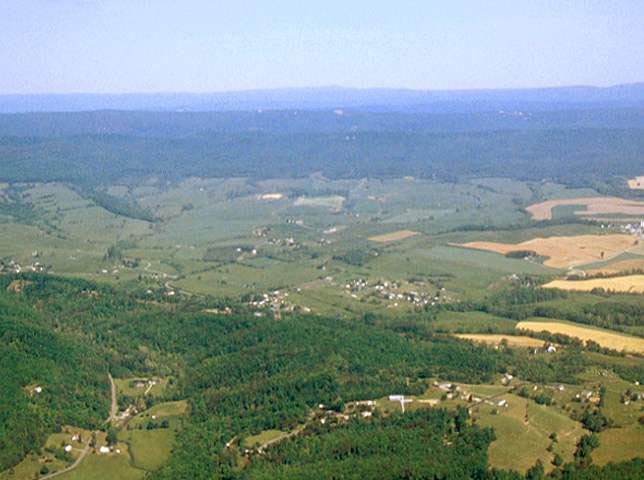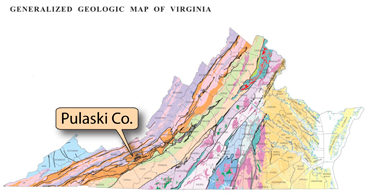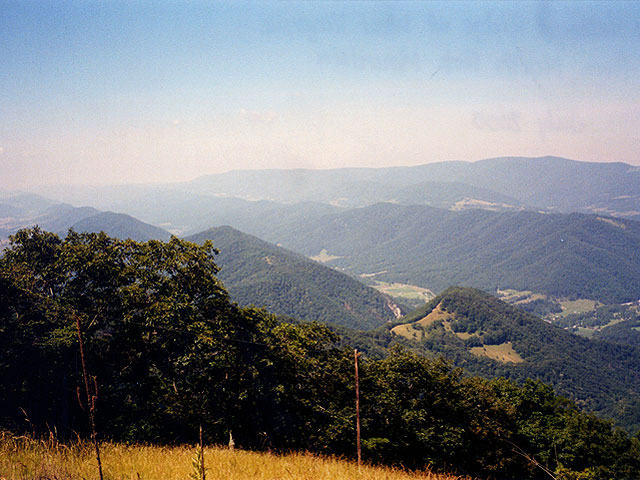
Valley and Ridge Physiography: Regional Setting (Part 2)
• The southern and central Appalachian Valley and Ridge can be divided into two smaller regions, the Great Valley to the east and a more mountainous western ridge and valley belt.

 Above: different geomorphology in the eastern and western parts of the Valley and Ridge is evident in this photograph looking west across the province near Pulaski. Note the Great Valley, which is underlain by carbonates in the foreground and middle distance. Layers of resistant sandstone and conglomerate in the western part of the province give it a more mountainous topography. (Photograph by Robert Whisonant)
Above: different geomorphology in the eastern and western parts of the Valley and Ridge is evident in this photograph looking west across the province near Pulaski. Note the Great Valley, which is underlain by carbonates in the foreground and middle distance. Layers of resistant sandstone and conglomerate in the western part of the province give it a more mountainous topography. (Photograph by Robert Whisonant)
• The Valley and Ridge is world-famous as the “folded mountains” belt of the Appalachians. Its most characteristic feature is the presence of long, parallel, northeast-southwest trending ridges and valleys.

This photograph shows the distinctive Valley and Ridge topography in the Seneca Rocks area of West Virginia. The valleys in this province are underlain primarily by carbonate rocks (limestone and dolomite), while the ridges are supported by more resistant rocks such as sandstones or conglomerates. The term folded mountains refers to the northeast-trending geologic folds and faults that give this province its characteristic landforms. (Photograph by Phyllis Newbill)